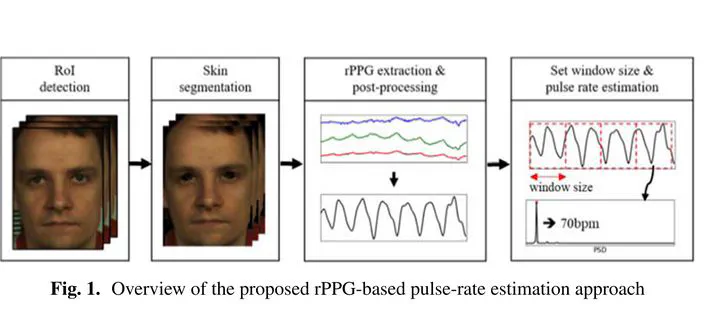Effect of Time Window Size for Converting Frequency Domain in Real-Time Remote Photoplethysmography Extraction
 Image credit: Unsplash
Image credit: UnsplashAbstract
Remote-photoplethysmography (rPPG) is an attractive technology that can measure vital signs at a distance without contact. Previous remote-photoplethysmography studies focused mainly on eliminating the artifact such as motion but finding the optimal setup or hyperparameters are also an important factor influencing the performance. As one of them, window size is the length of the signal used to calculate the vital signs once in a spectral method and has not been analyzed in detail in previous works. In general, the use of a long window size increases the re-liability of the estimations, but it cannot reflect continuously changing physiological responses of human. Also, using too short window size increases uncertainty. In this paper, we compare and analyze the pulse rate estimation results according to window sizes from short to long using CHROM, which is one of the popular rPPG algorithms. Results on the PURE dataset showed that the longer the window size, the higher the SNR and the lower the RMSE. At a window size of about 4 s (120 frames), the SNR was switched from negative to positive and an acceptable error rate (RMSE < 5) was observed.
Type
Publication
Intelligent Human Computer Interaction (IHCI)